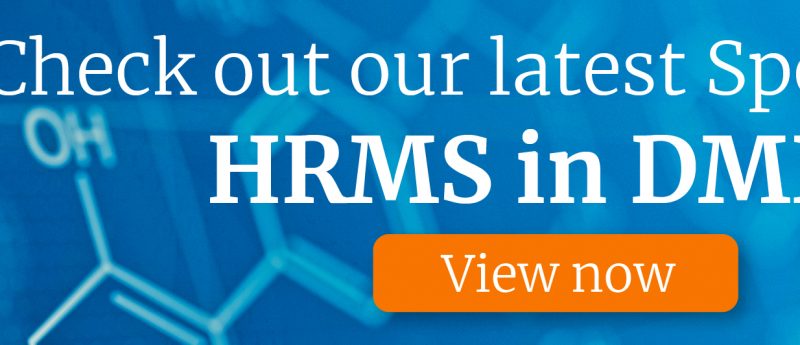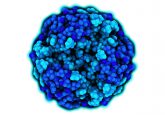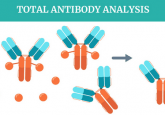Considerations when developing ligand binding assays to support ADC programs

 Franklin Spriggs received his M.S. in Quality Assurance and Regulatory Affairs from Temple University (PA, USA) in 2015. Mr. Spriggs has been working in the biotechnology/pharmaceutical industry for over 15 years. Of those 15 years, over 10 years have been in the development and validation of quantitative ligand binding assays. Currently Mr. Spriggs role is Group Leader of the ligand binding assay group at AIT Bioscience, a CRO in Indianapolis (IN, USA).
Franklin Spriggs received his M.S. in Quality Assurance and Regulatory Affairs from Temple University (PA, USA) in 2015. Mr. Spriggs has been working in the biotechnology/pharmaceutical industry for over 15 years. Of those 15 years, over 10 years have been in the development and validation of quantitative ligand binding assays. Currently Mr. Spriggs role is Group Leader of the ligand binding assay group at AIT Bioscience, a CRO in Indianapolis (IN, USA).
Development of ADC therapeutics in the pharmaceutical and biotechnology industries continues to grow. These complex molecules require a robust bioanalytical strategy for the quantitation of the ADC, the total antibody and anti-drug antibodies. A Bioanalysis Zone webinar hosted on 18 May 2015, featured Loren Olson of SCIEX discussing how LC-MS/MS can be used to quantitate the amount of ADC present in patient samples. This commentary will look at the LBA approaches, and cover some of the challenges that exist when developing methods for the quantitation of the various ADC analytes.
Developing and validating LBAs for ADCs is a labor intensive process that typically requires multiple assays in order to adequately characterize the pharmacokinetics of a dosed drug. The assays commonly assessed utilizing an LBA platform have been outlined as follows: conjugated antibody, total antibody and anti-therapeutic antibodies [1]. The conjugated antibody assay is developed to detect only those molecules that contain at least 1 cytotoxic small molecule drug conjugated to the antibody. The total antibody assay is designed to detect all of the therapeutic antibody framework regardless of the number of cytotoxic small molecules conjugated to it. Finally, the anti-therapeutic antibody assay should be able to detect antibodies to both the conjugated antibody and the unconjugated antibody. Each of the assays mentioned here have their own unique challenges that a method developer and validation expert should consider, several of which will be discussed in more detail below.
An important question that needs to be asked when developing the conjugated antibody assay is whether or not the assay should be ’Drug to Antibody Ratio (DAR) sensitive’. The DAR is a measure of the number of cytotoxic drugs that are conjugated onto a single ADC antibody framework. For molecules such as Trastuzumab emtansine, the DAR ranges from 0—8 and has a targeted DAR of approximately 3.5 [2]. Once a decision has been made whether or not the assay will be sensitive to the DAR, the assay format can be determined. The format can make a big impact on the DAR sensitivity of an assay, an example of which is described in the paper by Spriggs et al. [3]. One format that can be utilized, and is typically DAR insensitive, is capturing the therapeutic by an anti-cytotoxic drug antibody and detecting with either an antibody to the ADC antibody framework or the ADC target. An assay that is more sensitive to DAR is one where the conjugated antibody is first captured by either a specific antibody to the ADC antibody framework or the ADC target followed by detection with an anti-cytotoxic drug antibody.
The development of the assay to quantitate the total antibody assay may, at first, seem like a simpler assay. Experiences with these assays have proven the opposite to be true. The primary challenge with developing the total antibody assay is being able to accurately quantitate both the conjugated antibody (at all DARs) and unconjugated antibodies equally well. To ensure the most appropriate assay, an ADC standard curve and plate acceptance QCs should be prepared and tested alongside total or unconjugated antibody quality controls. In order to accomplish this there must be a fine balance between specificity and non-specificity. The capture and detection reagents that are chosen must be able to bind the antibody framework of an ADC while not being dependent upon the linkers or the cytotoxic drug conjugated to the antibody. Non-clinically, this assay can be a generic, anti-human IgG, clinically; however, the generation and/or screening of reagents is critical to ensure reagents are available. While not necessary, it can be useful to test different DAR fractions of the ADC to understand what effect DAR has on the accuracy and precision of the assay.
Development of a basic ADA assay is straight forward; however, there are two important items that should be considered: What are the linker chemistry and physiochemical attributes, and what antibodies am I detecting? The first question is important as many labs default to executing an acid disassociation step when developing Anti-Therapeutic Antibody (ATA/ADA) methods in order to improve drug tolerance (the ability of the assay to detect an anti-therapeutic assay in the presence of free, circulating drug). This default strategy should be carefully considered prior to starting the method development as a common ADC linker chemistry results in those linkers being acid labile. This property of the linker does not preclude the use of acid disassociation, but it can significantly increase the toxicity of the samples as there is more free cytotoxic small molecule. Additionally the removal of the linker chemistry makes detection of anti-cytotoxic antibodies less reliable.
The second question or consideration is to determine what positive controls you are interested in using to characterize and control your assay. ATA/ADA assays utilize a traditional bridging format (therapeutic conjugated with either biotin or ruthenium and used as capture and detection reagents respectively). This format works well for the ATA methods as it allows for the ability to detect not just ATA to the antibody framework of the ADC, but also to the other functional domains (linker and cytotoxic small molecule drug). In order to demonstrate that antibodies to both domains are able to be consistently detected, adding a second positive control to the assay plate is advisable. One positive control would be directed toward the ADC antibody framework whereas the second positive control should be an antibody able to bind to the cytotoxic drug and linkers.
Bioanalysis of ADCs is an area that continues to evolve as new conjugation methods are utilized, new technologies develop, and regulatory input is given. One can see from this commentary and the aforementioned webinar by Loren Olson, that there is more than one way to approach the quantitation and characterization of ADCs in matrix due to their inherent heterogeneity and complex, multi-domain structure. Several national conferences continue to highlight ADCs through education and sharing experiences in the bioanalytical and manufacturing world. One thing is clear, ADCs are not a short term fad, but are an ever growing part of many organization’s therapeutic pipelines for oncology.
References:
- Gorovits B, Alley SC, Bilic S et al. Bioanalysis of antibody-drug conjugates: American Association of Pharmaceutical Scientists Antibody-Drug Conjugate Working Group position paper. Bioanalysis 5(9), 997-1006 (2013).
- Lewis Phillips GD, Li G, Dugger Dl et al. Targeting HER2-positive breast cancer with trastzumab-DM1, an antibody-cytotoxic drug conjugate. Cancer Res. 68(22), 9280-9290 (2008).
- Spriggs FP, Duriga N, Rathi A, Qu Q. Resolution of matrix interference: quantitative and quasi-quantitative ligand binding assays case studies. Bioanalysis 6(8), 1093-1101 (2014).






